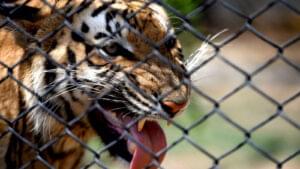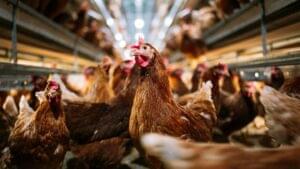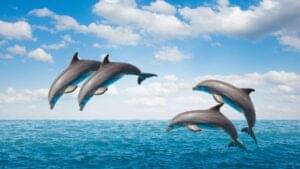We now frequently refer to climate change, but have we actually thought about what this phenomenon means for animals?
The effects of climate change, including changes in temperature, are becoming more obvious. The repercussions of climate change are already being felt on a global scale. They consist of:
- Rising sea levels have caused certain islands, like the Solomon Islands, to disappear.
- Natural catastrophes including fires, tornadoes, storms, and floods are happening increasingly regularly.
And animal species are also negatively impacted by climate change:
- Because of how climate change is affecting their habitats and ecosystems, more animal species are going extinct.
- Animal habitats are getting less cozy and occasionally hostile.
- Animals are impacted by pollution because it has an impact on the food they eat and the environments they live in.
- For some animals to endure the effects of climate change, they must adjust their breeding and feeding habits.
- Animals have a far higher danger of going extinct if they can’t migrate to places with better conditions. Seven animal species that are currently impacted by climate change are listed below.
1. Cheetahs
On the Red List of Endangered Species maintained by the International Union for Conservation of Nature (IUCN), the cheetah is now classified as vulnerable. Due to climate change, the number of cheetahs is drastically decreasing. Also, cheetahs’ natural prey stocks are dwindling in some regions. Cheetahs have been forced to alter their diets as a result, and they now hunt other creatures that share their habitat. These creatures frequently lack the nutritional value of the cheetahs’ typical prey, which impairs their capacity to create healthy sperm.
Cheetah sperm counts are actually 10 times lower than those of a typical domestic cat. And this is because the sperm of cheetahs now include aberrant coils as a result of the greater temperatures brought on by global warming. Moreover, declining testosterone levels in male cheetahs brought on by rising temperatures have an impact on the large cat’s capacity for reproduction.
Conservationists are urging the world community to help since the number of cheetahs in the wild is constantly dwindling. Finding out more about cheetahs and contributing to conservation efforts are two of the finest ways to help. For instance, you may work with GVI volunteers to collect information in the Karongwe Private Game Reserve for programs that support cheetah conservation.
2. Giant panda bears
This trademarked bear of the World Wide Fund for Nature (WWF), who enjoys two-toned trees, only eats bamboo. Yet, as a result of climate change, less bamboo is growing in China’s panda habitats. Bamboo not only serves as the bears’ main source of food but also shields them from the elements, making pandas defenseless in every way.
3. Green turtle
Like many other animal species, green turtles are susceptible to temperature fluctuations brought on by global warming. Climate change also affects the development of turtles because a young turtle’s sex is dependent on the temperature of the sand where its egg is placed. Female turtles are born in the warmer regions. Hence, more females than males are hatching as a result of climate change-related increases in temperature. And as a result, there are fewer male green turtles in the area.
Since there would be fewer potential mating partners for female turtles in the future, this may have an impact on the population growth of green turtles. By enrolling in GVI’s Endangered Turtle Conservation and Research program in Greece, you may aid in the preservation of this threatened species. Or, you may visit the Seychelles and aid in the preservation of green and hawksbill sea turtles.
4. Asian elephants
High temperatures have a special effect on elephants. This is due to the fact that they must consume a lot of fresh water to thrive. So, it becomes more challenging for elephants to receive all the water they require each day as a result of climate change and global warming, which can lead to droughts and water shortages. Higher temperatures also make it simpler for alien plants to grow and outcompete the elephants’ typical food supplies, such as bananas and bamboo leaves.
While volunteering in Thailand, you can become a member of GVI and contribute to initiatives to protect Asian elephants.
5. Polar bears
Arctic sea ice is disappearing due to climate change and global warming. The polar bears dwell and hunt for seals on this ice, making it significant. Polar bears therefore have less access to food as more ice melts, and their habitats are shrinking.
6. Jaguars
Jaguar populations will plummet if there are several major droughts or floods in a short period of time, which is highly likely due to climate change. Studies have indicated that jaguars are rather tolerant to intense drought and flood over the short term. In addition, jaguars are already threatened by habitat loss due to deforestation in Central and Latin America, where these cats are found, as well as hunting of both themselves and their prey.
Join GVI in Costa Rica if you wish to take part in observing the behavior of this lovely species and supporting the preservation of their habitat.
7. Adélie penguins
These birds are found in Antarctica and eat krill, which are organisms that resemble shrimp and are found beneath the ice sheets. The ice in this region is melting as a result of climate change. Also, when the ice melts, krill populations decline, forcing the penguins to leave their normal environment in search of new food sources.
Due to this, they sometimes experience food shortages, which makes it more difficult for them to settle down and mate during the breeding season.
How to have an impact on wildlife preservation and climate change
Several animal species’ chances of surviving are under danger due to climate change. In certain instances, it has caused them to move up the list of endangered animal species. It’s not all bad news, either. Worldwide initiatives for animal conservation are active, and they are advancing the endeavor to lessen the effects of climate change. By making a contribution to conservation efforts, we can all do our part to mitigate the effects of climate change.
They could include promoting conservation, taking part in conservation studies, or taking part in actual wildlife conservation projects. GVI has a variety of initiatives that you may participate in to help protect endangered animals and the habitats they depend on. Check out GVI’s extensive portfolio of marine and wildlife conservation initiatives designed to lessen the number of animals impacted by climate change.




